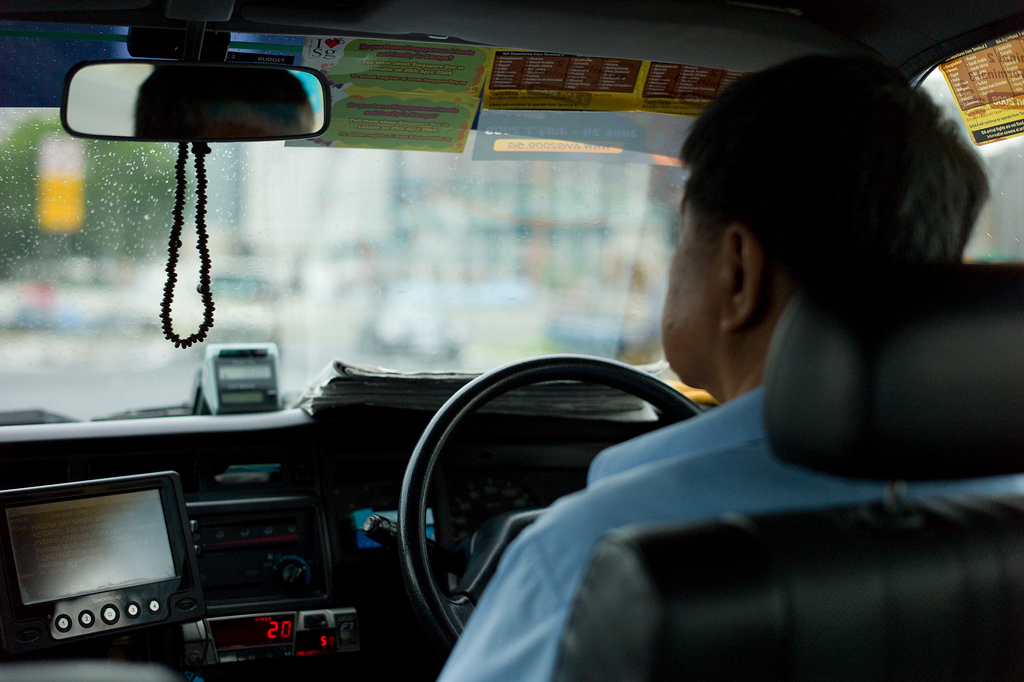One of the great mysteries of the Universe is Singapore’s taxis. Why are there loads of them when you don’t need them, but virtually nonexistent when you do? How do they warp time so they’re changing shift exactly when you start looking for them? What mysterious allergy to water makes them burrow underground and vanish when it rains? I blew $45 on cab rides to ask five taxi drivers:
The Main Issues of Taxi Availability
Before we get into this, I need to explain the relationship between taxi drivers and taxi companies. I’ve covered it in earlier articles, but here’s a quick rehash:
A taxi company does not make its revenue directly from passengers. When you pay the fare in a Comfort cab, the money doesn’t go to Comfort. It goes to the taxi driver. How much the taxi driver earns is his own business – the more people he wants to pick up, the more he’ll earn.
The taxi companies – Comfort, SMRT, CitiCab and so on – make their money by charging the taxi drivers, not the passengers.
This is done through a daily rental fee, which is paid by the drivers. Depending on the car model, the price will vary. So the old beat up Toyota Crowns can be as cheap as $80 a day, whereas the more luxurious models can reach around $130 a day.
In theory, this should motivate taxi drivers to pick up as many passengers as they can. Based on conversations with five taxi drivers though, there are some flaws in the system:
- Accident Risks in Rain
- Picking Up the Sloshed
- Choosing to Earn Less
- Problems with Heavy Baggage
1. Accident Risks in Rain
I spoke to a driver named Cheok, who agreed it was harder to get taxis in the rain.
“A lot of drivers don’t like to drive during heavy rain,” he says, “because it’s very dangerous. When you drive a taxi, you may not know the place the passenger is going, so the road is not familiar. If you already don’t know the way very well, you still want to drive in the heavy rain some more?”
Cheok added that risks outweighed the income:
“I get into an accident two times, I can lose my job. Also I will bear the cost of the damages, liable up to $2,000. If you were me, will you risk losing your job or $2,000 to earn the taxi fare? It’s not worth it.”
Cheok added that, when there are heavy rains, taxi drivers want to avoid flood prone areas:
“Farrer Park, Alexandra Road, Nee Soon…all these places a lot of us don’t like to go during heavy rain. If there is a flood, and you drive your taxi into it, you are responsible. Any maintenance issues, you are the one who has to pay.”
2. Picking Up the Sloshed


Say you’re utterly smashed, and can’t stand without two of your buddies propping you up. You need a taxi to get home, more than ever. But the next cab you flag down just zooms past. Why?
“It’s the same with a drunk friend and your own car,” says long time taxi driver George (not his real name), “You know he is going to vomit, or be rowdy, and you also will not want to take him.
I have plastic bags, but you think that helps? When they are drunk they will just vomit without warning. And after that I spend more than one hour cleaning. For the sake of one passenger, I give up two or three more.”
3. Choosing to Earn Less
Ever get the sense that half or just two-thirds of all the taxis are on the road? You may be right. George explains that some taxi drivers aren’t as driven (see what I did there?) for the money:
“You have some taxi drivers who really need the money, and you have some who are retirees who are just doing it to stay active. The retirees don’t need to push themselves too hard. Once they hit a certain quota for the day, they go home and sleep. Even if they can earn more, they are not so eager.“
Wait, just retirees?
“No, some young ones are also like that. They are more interested in their family time, or they want to go out and KTV or whatever. Some of them are not willing to give up an hour just to earn another $50.”
4. Problems with Heavy Baggage
Lugging heavy bags? Look like a pack mule going over the high Sierras? Don’t expect all taxi drivers to slow down and help. According to taxi Pang, who’s been driving for two years:
“As part of our service, we need to get out and help to load the things in the car. If the passenger helps a bit it’s okay. But some of them will just stand there and watch you. For people like me, I am already almost 60. I have ever gotten back injuries before.
At least they should help a bit. But most of them will not; when I see someone with so many bags, I also hesitate to pick them up.”
What Can We Do?
The issue is with the nature of taxi companies’ business models. We can’t expect taxi drivers to take certain risks – e.g. road accidents in the rain – for the fares they’re getting. There’s also no way to force taxi drivers to pick up more passengers; it’s about their own motivation. We will explore more regarding COE allocation for taxis and how this impacts drivers and taxi companies so stay tuned with us on Facebook!
Image Credits:
tallkev, Simon_sees, Oneras, cobalt123,
Source: http://www.moneysmart.sg/money-talks/why-can-t-you-ever-get-a-cab-when-you-need-one



